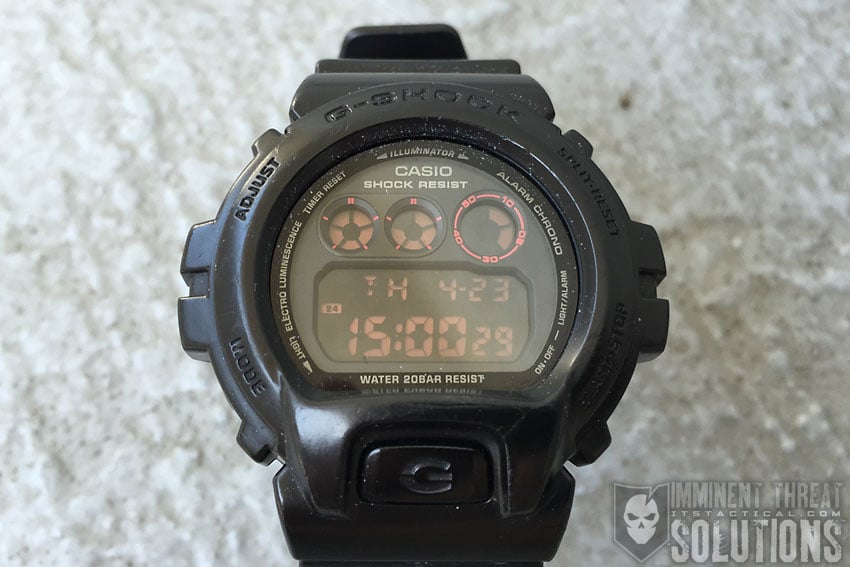
Military time, or a 24-hour clock can take some getting used to, but is no harder to learn that a 12-hour clock. Once practiced, just like anything, it becomes second nature and the mental conversion in your head becomes easier.
While we’re discussing military time and getting into its intricacies, I’d also like to make the case today for converting your watch, smartphone and any other device capable, over to military time. Not only will it save you a lot of headaches when you set your phone alarm when half asleep, but the sooner the rest of society converts over, the sooner we can all stop screwing up time.
What I mean by that is that there can be a lot of confusion with time. Not only do you potentially have to often contend with different time zones, but there’s that pesky AM/PM business that can often be left off in conversation or emails. It can certainly mean a big difference when you’re talking about calling someone at 6 a.m. or 6 p.m.!
Telling Military Time
For starters, I’d like to mention that most European countries don’t refer to a 24-hour clock as military time, it’s just “the time.” Here in the United States the standard is a 12-hour clock, so it’s effectively been called military time due it being a standard there. I was fortunate to have taught myself military time from a young age and remember just wanting to learn it because that’s how the military did things and I’d wanted to join from a young age. When I finally got into the Navy, it wasn’t something I had to get used to, as my watch had been set to it for years.
My method for telling military time is actually the older method I used, I’ve been using it for so long that I just know what the hour is when I hear it. If I’m told 1500, I just know that’s 3 p.m., no conversion necessary. The way I learned though, was through basic arithmetic.
A typical clock has 12 hours, with demarcations for hourly increments. With 24-hour clocks, the “p.m.” hours are typically marked as a sub-number like the clock photo above. As you can see, the “1” is both “1” and “13”. Meaning that by adding 12 to 1, you get 13. This is the same for any hour. To convert 4 p.m. to military time you just add 12. 12 + 4 = 1600 hours. The hours deal is stuck onto the back end when the time is spoken and in my opinion just helps to reinforce that 1600 is a time value and not the number 1,600.
The addition method works, as does subtraction if you’re given the military time and you want to find the “civilian” time. If 1600 is your time, 16 – 12 = 4 p.m. As you can see with a 24-hour clock, there’s no reason to use the AM/PM designation, the time is simply the time.
More on Time
One of the reasons I’m convinced that a 24-hour clock is superior is shown in this example. Hypothetically, say the current time is 8 a.m. and I’m notified that an important event will occur in 10 hours. With a 24 hour clock, I simply add 10, putting the event at 1800. Done. Alternatively, with a 12-hour clock, I have to think… Ok, it’s 4 hours until noon and then another 6 hours puts me at 6 p.m. A little more tricky, especially if I’m telling someone where I’m going. I can’t just say I have a thing at 6. I have to say 6 p.m. To avoid confusion with 6 a.m.
As a refresher, here’s another quick look at the 24-hour clock conversions:
- 14:00 is 2 p.m. as 12 plus 2 equals 14
- 16:00 is 4 p.m. as 12 plus 4 equals 16
- 14:00 is 2 p.m. as 14 minus 12 equals 2
- 16:00 is 4 p.m. as 16 minus 12 equals 4
When you’re writing military time, don’t use the colon like you do with the 12-hour clock. 1:00 p.m. is 1300. When speaking military time, sound it out. 1835 becomes Eighteen Thirty-Five. The last thing to mention is the 0000 / 2400 conundrum. They’re the same thing and are interchangeable. In the military, you’ll also hear “o’dark hundred,” “zero dark thirty” “zero dark hundred,” etc. These don’t actually mean 0030 or 0000 to most in the military, it’s just a slang way of saying it’s way too early in the *$*@*&% morning for this!
In all, there’s really not much to telling military time and using a 24-hour clock, there’s only another 12 numbers to memorize if you even want to get that detailed. Remember the +/- 12 hour conversion will makes things even easier than memorization and before long the memorization will come. Setting your devices to a 24-hour clock will also help get you there even faster.
If anything, there’s always the fun game you can play when someone who doesn’t know military time asks you the time. Just show them your digital watch or phone that’s displaying military time and watch them try to mentally compute how to figure out what time it is before you chuckle and tell them. That’s just me?